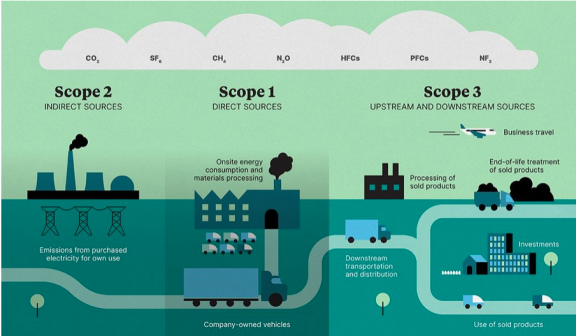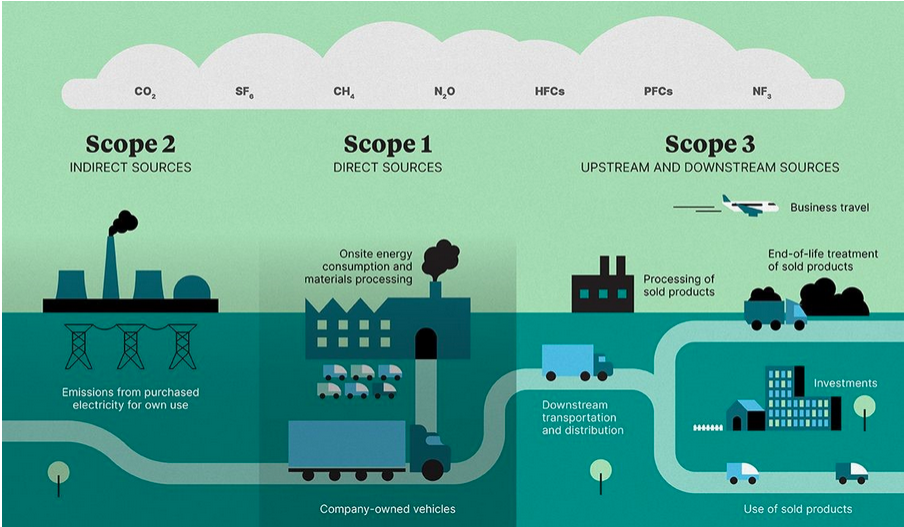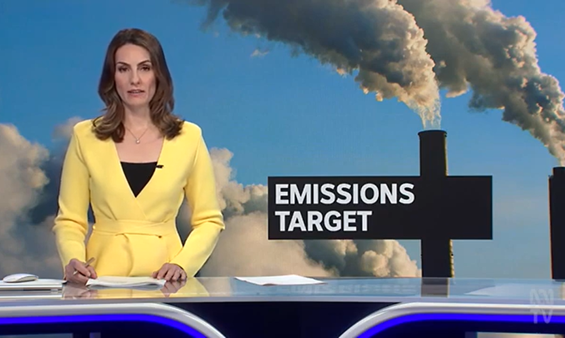
Climate Explainer: What are Scope 3 emissions?
3 August 2023
You may have heard politicians and conservationists talk about scope 3 emissions in the context of climate change regulations. But what are scope 3 emissions and why are they so important?
Defining and regulating emissions
When it comes to greenhouse gas emissions there are three categories of greenhouse gas emissions that are considered by regulators (for Western Australia the Environmental Protection Authority or EPA): Scope 1, Scope 2 and Scope 3. Each scope is subject to different levels of regulation and scrutiny.
Carbon dioxide (CO2) emissions – mainly from burning coal, oil and gas – are the primary cause of climate change but there are other greenhouse gases that result from industrial and agricultural processes. These are also regulated by the EPA.
Methane (CH4) is a major one, the primary constituent of fossil gas and 86 times stronger greenhouse gas than CO2 but it is also a common emission from agricultural processes. Industrial gases nitrous oxide (N2O), sulphur hexafluoride (SF6), hydro fluorocarbons (HFCs), perfluorocarbons (PFCs) and nitrogen trifluoride (NF3) are also strong greenhouse gasses that are regulated by the EPA.
Scope 1, 2 and 3 emissions
Scope 1 emissions are greenhouse gas emissions caused directly by the project that is being considered by regulators. This includes any burning of fossil fuels and any releases of greenhouse gases into the atmosphere. These are the emissions that receive the most scrutiny from regulators.
Scope 2 emissions are greenhouse gas emissions that are released as a consequence of the use of energy by the project. There is overlap with Scope 1 emissions where the project supplies its own energy. Scope 1 and Scope 2 are considered together by the EPA and by the federal Safeguard Mechanism, which applies to large projects with over 100,000 tonnes CO2-e of emissions per annum.
Scope 3 emissions are indirect greenhouse gas emissions emitted due to the existence of the project. These can be the emissions embedded in purchased goods and services required to carry out the enterprise, upstream and downstream transport and distribution of materials, waste disposal or the emissions resulting from use of the sold products.

Why are Scope 3 emissions a big issue?
The controversy is that it can be very difficult to determine and track scope 3 emissions. These emissions almost always occur outside the jurisdiction of the EPA. The companies proposing projects often complain that these emissions are being double counted by both the WA EPA and where ever the emissions were released.
However, many places do not track these emissions at all, which introduces its own problems in realistically determining the amount of Scope 3 emissions.
When the project being considered is a fossil fuel project, it’s significantly easier to determine downstream greenhouse gas emissions because it is simply the amount of emissions released when that fuel is burnt. In comparison, the amount of petroleum product that ends up being used as a chemical feedstock or in plastics is about 10% compared to the majority that is simply burnt.
When it comes to the effects of climate change where the emissions occur doesn’t matter only that it will be released. So, conservationists strongly believe that to properly protect our environment our regulatory agencies and law need to be considering the emissions that Western Australia is contributing to everywhere in the world. Its time to stop literally adding fuel to the fire.


Discussion